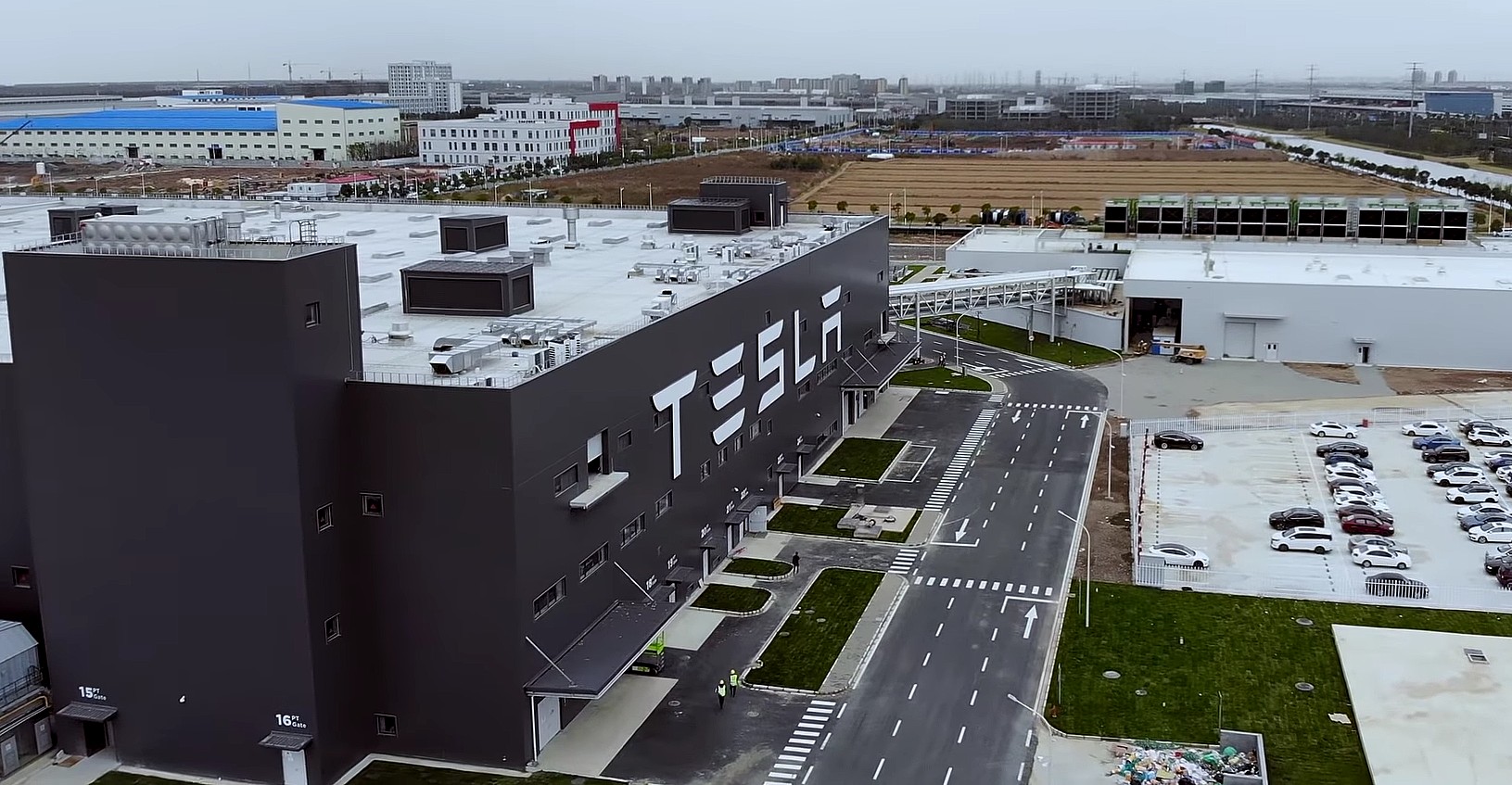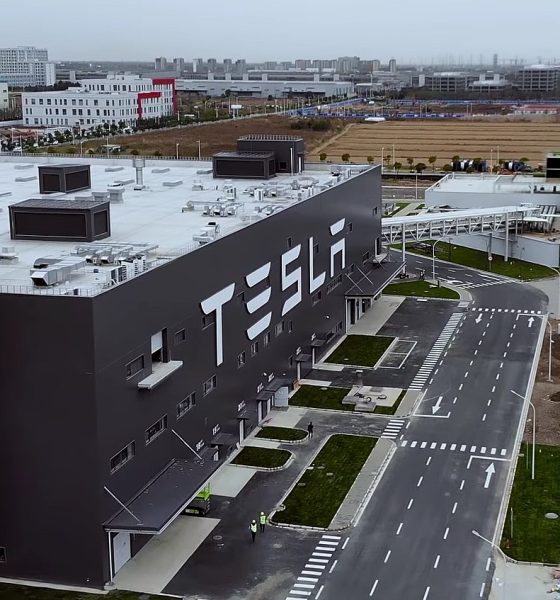

News
Tesla China shares Giga Shanghai safety measures against COVID-19 virus
Local Chinese media recently shared a video showing the safety precautions Tesla has in place at its Giga Shanghai facility. Based on the short video, Tesla China appears to be adopting a proactive stance against COVID-19, using a variety of initiatives that would allow the company to help prevent the spread of the coronavirus among its employees.
Giga Shanghai is currently back in full operations following a government-mandated shutdown during the height of the initial COVID-19 outbreak in China. After the shutdown was lifted, Giga Shanghai gradually resumed operations, until it was able to return to full activities. Today, Gigafactory 3 appears to have returned to full form, with construction at the Phase 2 zone even accelerating.
But even if the initial wave of coronavirus cases has already peaked, Tesla China is still adopting several important precautions for its employees. As indicated in the video, Tesla actively checks its workers’ body temperatures as soon as they arrive at the electric car production facility. The entire Gigafactory 3 complex is also disinfected regularly, and employees are being required to have lunch in isolation to practice social distancing.
Perhaps most interestingly, Tesla China has also stopped allowing its employees to share apartments, providing isolated accommodations instead. Overall, these precautionary measures could ultimately protect Giga Shanghai’s employees from contracting COVID-19, which is still spreading actively in other countries.
Tesla China’s precautionary measure will best be adopted by the electric car maker in its Fremont factory, Giga New York, and Gigafactory Nevada as long as the facilities remain operational. The United States is currently dealing with the effects of the coronavirus, and several areas have already rolled out a “shelter in place” lockdown. Among these are six Bay Area counties on Monday, which affects Tesla’s Fremont factory. That being said, Alameda County has declared Tesla as an “essential business,” and thus, the Fremont factory will be allowed to remain in operation, at least for now.
Responding to the county’s decision, Elon Musk has advised workers at the Fremont factory to stay home if they are feeling unwell, though he also noted that he would be reporting to work as usual. “If you feel the slightest bit ill or even uncomfortable, please do not feel obligated to come to work. I’m going in on Thursday unless anything changes,” Musk wrote in an email shared to the Los Angeles Times. At the end of his email to employees, Musk noted that “I’d rather you were at home and not stressed, than at work and worried.”
With the Fremont factory still in operation despite the ongoing lockdown due to the COVID-19, Tesla would best adopt the precautionary measures it adopted at its Giga Shanghai plant. Tesla, after all, stands as one of the only automakers with direct experience in how to run a factory safely amidst the coronavirus outbreak. The company would therefore best be served by utilizing this experience to its utmost potential.

News
Tesla starts showing how FSD will change lives in Europe
Local officials tested the system on narrow country roads and were impressed by FSD’s smooth, human-like driving, with some calling the service a game-changer for everyday life in areas that are far from urban centers.

Tesla has launched Europe’s first public shuttle service using Full Self-Driving (Supervised) in the rural Eifelkreis Bitburg-Prüm region of Germany, demonstrating how the technology can restore independence and mobility for people who struggle with limited transport options.
Local officials tested the system on narrow country roads and were impressed by FSD’s smooth, human-like driving, with some calling the service a game-changer for everyday life in areas that are far from urban centers.
Officials see real impact on rural residents
Arzfeld Mayor Johannes Kuhl and District Administrator Andreas Kruppert personally tested the Tesla shuttle service. This allowed them to see just how well FSD navigated winding lanes and rural roads confidently. Kruppert said, “Autonomous driving sounds like science fiction to many, but we simply see here that it works totally well in rural regions too.” Kuhl, for his part, also noted that FSD “feels like a very experienced driver.”
The pilot complements the area’s “Citizen Bus” program, which provides on-demand rides for elderly residents who can no longer drive themselves. Tesla Europe shared a video of a demonstration of the service, highlighting how FSD gives people their freedom back, even in places where public transport is not as prevalent.
What the Ministry for Economic Affairs and Transport says
Rhineland-Palatinate’s Minister Daniela Schmitt supported the project, praising the collaboration that made this “first of its kind in Europe” possible. As per the ministry, the rural rollout for the service shows FSD’s potential beyond major cities, and it delivers tangible benefits like grocery runs, doctor visits, and social connections for isolated residents.
“Reliable and flexible mobility is especially vital in rural areas. With the launch of a shuttle service using self-driving vehicles (FSD supervised) by Tesla in the Eifelkreis Bitburg-Prüm, an innovative pilot project is now getting underway that complements local community bus services. It is the first project of its kind in Europe.
“The result is a real gain for rural mobility: greater accessibility, more flexibility and tangible benefits for everyday life. A strong signal for innovation, cooperation and future-oriented mobility beyond urban centers,” the ministry wrote in a LinkedIn post.
News
Tesla China quietly posts Robotaxi-related job listing
Tesla China is currently seeking a Low Voltage Electrical Engineer to work on circuit board design for the company’s autonomous vehicles.

Tesla has posted a new job listing in Shanghai explicitly tied to its Robotaxi program, fueling speculation that the company is preparing to launch its dedicated autonomous ride-hailing service in China.
As noted in the listing, Tesla China is currently seeking a Low Voltage Electrical Engineer to work on circuit board design for the company’s autonomous vehicles.
Robotaxi-specific role
The listing, which was shared on social media platform X by industry watcher @tslaming, suggested that Tesla China is looking to fill the role urgently. The job listing itself specifically mentions that the person hired for the role will be working on the Low Voltage Hardware team, which would design the circuit boards that would serve as the nervous system of the Robotaxi.
Key tasks for the role, as indicated in the job listing, include collaboration with PCB layout, firmware, mechanical, program management, and validation teams, among other responsibilities. The role is based in Shanghai.
China Robotaxi launch
China represents a massive potential market for robotaxis, with its dense urban centers and supportive policies in select cities. Tesla has limited permission to roll out FSD in the country, though despite this, its vehicles have been hailed as among the best in the market when it comes to autonomous features. So far, at least, it appears that China supports Tesla’s FSD and Robotaxi rollout.
This was hinted at in November, when Tesla brought the Cybercab to the 8th China International Import Expo (CIIE) in Shanghai, marking the first time that the autonomous two-seater was brought to the Asia-Pacific region. The vehicle, despite not having a release date in China, received a significant amount of interest among the event’s attendees.
Elon Musk
Elon Musk and Tesla AI Director share insights after empty driver seat Robotaxi rides
The executives’ unoccupied tests hint at the rapid progress of Tesla’s unsupervised Robotaxi efforts.

Tesla CEO Elon Musk and AI Director Ashok Elluswamy celebrated Christmas Eve by sharing personal experiences with Robotaxi vehicles that had no safety monitor or occupant in the driver’s seat. Musk described the system’s “perfect driving” around Austin, while Elluswamy posted video from the back seat, calling it “an amazing experience.”
The executives’ unoccupied tests hint at the rapid progress of Tesla’s unsupervised Robotaxi efforts.
Elon and Ashok’s firsthand Robotaxi insights
Prior to Musk and the Tesla AI Director’s posts, sightings of unmanned Teslas navigating public roads were widely shared on social media. One such vehicle was spotted in Austin, Texas, which Elon Musk acknowleged by stating that “Testing is underway with no occupants in the car.”
Based on his Christmas Eve post, Musk seemed to have tested an unmanned Tesla himself. “A Tesla with no safety monitor in the car and me sitting in the passenger seat took me all around Austin on Sunday with perfect driving,” Musk wrote in his post.
Elluswamy responded with a 2-minute video showing himself in the rear of an unmanned Tesla. The video featured the vehicle’s empty front seats, as well as its smooth handling through real-world traffic. He captioned his video with the words, “It’s an amazing experience!”
Towards Unsupervised operations
During an xAI Hackathon earlier this month, Elon Musk mentioned that Tesla owed be removing Safety Monitors from its Robotaxis in Austin in just three weeks. “Unsupervised is pretty much solved at this point. So there will be Tesla Robotaxis operating in Austin with no one in them. Not even anyone in the passenger seat in about three weeks,” he said. Musk echoed similar estimates at the 2025 Annual Shareholder Meeting and the Q3 2025 earnings call.
Considering the insights that were posted Musk and Elluswamy, it does appear that Tesla is working hard towards operating its Robotaxis with no safety monitors. This is quite impressive considering that the service was launched just earlier this year.








